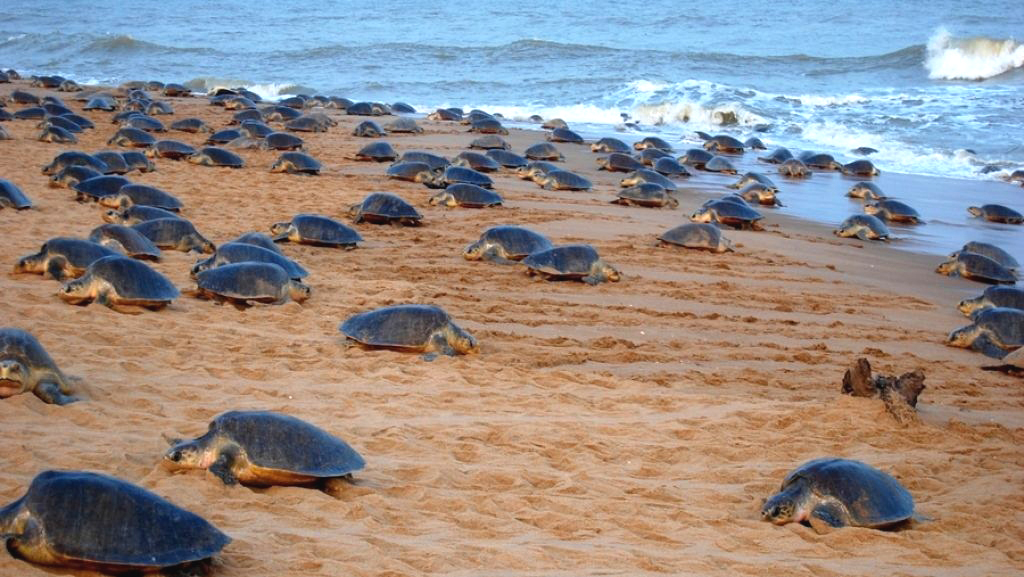Kendrapara: Wildlife officials are optimistic of convergence of lakhs of olive ridley turtles at the Gahirmatha beach nesting ground in Kendrapara district for mass nesting any time in the next fortnight as weather conditions are favourable.
Unlike the past years, the beach has not undergone erosion and the shape is perfect for the turtles to dig pits and lay eggs, a forest official said.
Every year, the marauding sea eats up portions of the geographical boundary of the Gahirmatha beach at the unmanned Nasi II Island. Sea waters inundate the beach, which stretches up to 2.6 kilometres, during high tide.
The Odisha coast is the largest mass nesting site for the olive ridleys. Apart from Gahirmatha, the sea turtles also turn up at Rushikulya river mouth and Devi river mouth.
“We’re expecting a large turnout of female turtles to lay eggs. The mass nesting natural heritage is likely to occur by the second week of March,” Divisional Forest Officer (DFO) J D Pati said.
The edge of the Gahirmatha beach is not steep and sharp, and the turtles will find it favourable to emerge from sea waters to crawl, according to the official.
Strong southerly winds and temperatures ranging from 32-38 degrees Celsius are conducive for turtles’ mass nesting.
There is a large congregation of the turtles in the deep sea. Everything has turned out to be good this year for the invasion of the reptiles to the nesting ground, Pati said.
The olive ridley is under the red list of threatened species of the International Union for Conservation of Nature.
Its status is vulnerable as they nest in a very few places and any disturbance to even one nest beach could have huge repercussions on the entire population, according to the World Wide Fund for Nature.
The olive turtles turn up in millions for mass nesting along the Odisha coast every year. In the last nesting season, around 3.5 lakh turtles laid eggs at the nesting grounds from March 9-23.
During ‘arribada’ (arrival by sea in Spanish), female turtles reach beaches usually at the dead of the night for laying eggs. After that, they return to the sea.
An olive ridley usually lays about 120-150 eggs. The hatchlings emerge from these eggs after 45-60 days and grow up without their mothers.
Reports suggest that out of every 1,000 hatchlings that enter the sea, only one manages to reach adulthood, according to Odisha Tourism.
PTI
